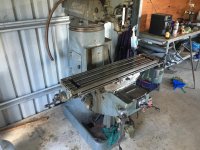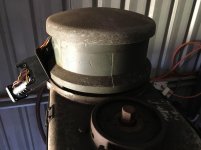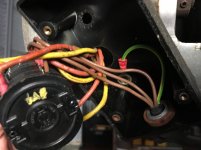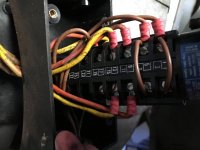Hi, I have recently purchased a Bridgeport (Adock & Shipley) J head, to get it running I have opted for a VFD (2hp TECO/Westinghouse).
The reading I had done prior to purchasing the VFD was that the pancake style motors were dual voltage, in my case I require it to be supplied by 240v.
I have come to the point of getting it wired and thought I would check what voltage the motor was set up for, now this is where it is a little confusing. I had anticipated 9 wires coming from the drum switch to the motor but I have 6?
I am missing the spec plate of the motor so I cannot give you anymore details other then the picture I have supplied.
Any information would be greatly appreciated!! I'm crossing my fingers I am able to use the VFD I have purchased to get it running!





The reading I had done prior to purchasing the VFD was that the pancake style motors were dual voltage, in my case I require it to be supplied by 240v.
I have come to the point of getting it wired and thought I would check what voltage the motor was set up for, now this is where it is a little confusing. I had anticipated 9 wires coming from the drum switch to the motor but I have 6?
I am missing the spec plate of the motor so I cannot give you anymore details other then the picture I have supplied.
Any information would be greatly appreciated!! I'm crossing my fingers I am able to use the VFD I have purchased to get it running!






